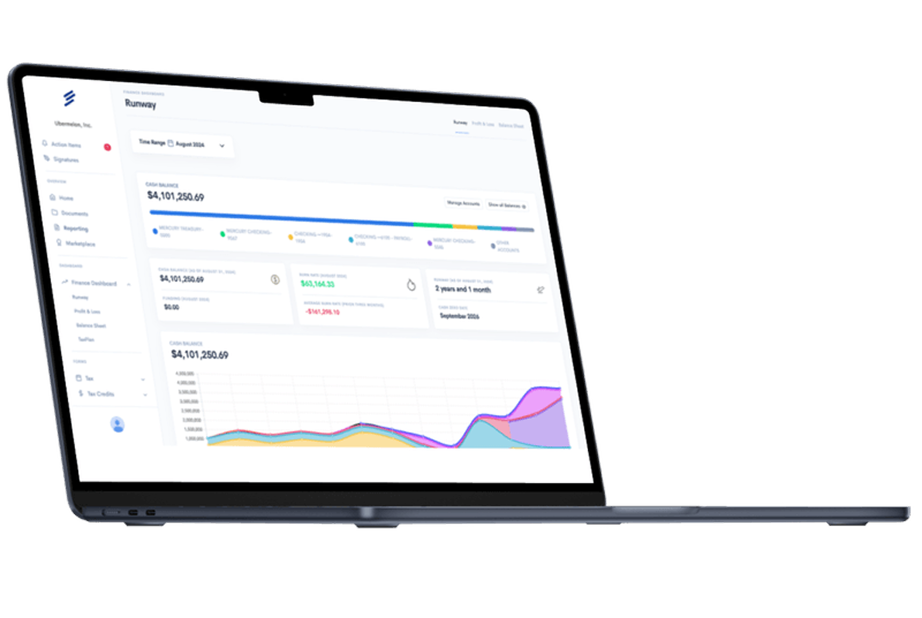Starting a new venture is challenging—especially when managing complex financial matters such as startup depreciation method
Time management is a crucial skill for professionals in today's fast-paced world. With increasing demands from work, personal life, and the constant connectivity of digital devices, many people find themselves overwhelmed and struggling to keep up. Effective time management isn't just about getting more done; it's about achieving the right balance between productivity and well-being. This guide explores practical strategies and techniques to help busy professionals take control of their time and accomplish their goals without burning out.
Understanding Time Management Fundamentals
Time management isn't simply about cramming more tasks into your day. It's about making conscious decisions about how you allocate your limited time resources to achieve what matters most to you. When you manage your time effectively, you experience less stress, greater productivity, and more satisfaction with both your professional and personal life.
Many professionals mistakenly believe that time management means working longer hours or multitasking constantly. In reality, effective time management often means doing less but focusing on high-impact activities. It's about quality over quantity, and making deliberate choices about where to invest your energy and attention. This mindset shift is the foundation for all other time management techniques.
The science behind time management reveals that our brains aren't designed for the constant task-switching that characterizes modern work environments. Studies show that it takes an average of 23 minutes to fully refocus after an interruption, meaning that frequent distractions can significantly reduce your overall productivity. Understanding these cognitive limitations helps explain why traditional approaches to "doing more" often fail to deliver results.
Time management also has profound implications for your physical and mental health. Chronic time pressure and the resulting stress can lead to burnout, anxiety, and even physical health problems. By contrast, feeling in control of your time correlates strongly with higher levels of happiness and life satisfaction. This makes time management not just a productivity tool, but an essential component of overall wellbeing.
The Psychology of Procrastination
Procrastination affects nearly everyone at some point, but understanding its psychological roots can help you overcome this common obstacle. At its core, procrastination isn't about laziness—it's about emotion regulation. We delay tasks that trigger negative emotions like anxiety, boredom, or frustration.
The brain's limbic system, which processes emotions, often overrides the prefrontal cortex responsible for planning and decision-making when we face unpleasant tasks. This creates an internal conflict where immediate emotional relief (avoiding the task) wins over long-term benefits (completing the task). Recognizing this pattern is the first step toward breaking it.
Perfectionism frequently fuels procrastination, as the fear of producing imperfect work leads to avoidance. Many high-achieving professionals struggle with this paradox—their high standards become barriers to starting tasks. Learning to embrace "good enough" for initial drafts or versions can help overcome this mental block and build momentum.
Effective Time Management Techniques
Successful time management relies on implementing proven techniques that align with your personal working style and professional demands. Different approaches work for different people, so experimenting with various methods can help you discover what works best for you.
The Pomodoro Technique remains one of the most accessible and effective time management methods for many professionals. This approach involves working in focused 25-minute intervals (called "pomodoros") followed by 5-minute breaks, with a longer break after completing four pomodoros. This structure leverages our natural attention spans and provides regular recovery periods to maintain mental freshness throughout the day.
Time blocking represents another powerful strategy where you schedule specific blocks of time for different types of tasks or projects. Rather than working from an endless to-do list, you assign each task to a dedicated time slot in your calendar. This method forces realistic planning and creates boundaries between different activities, reducing the mental load of constant task-switching.
The most effective time management systems incorporate these key elements:
- Prioritization frameworks to identify what truly matters
- Scheduling techniques that account for both focused work and inevitable interruptions
- Boundary-setting practices for managing digital distractions
- Regular review processes to evaluate and adjust your approach
Prioritization Frameworks
The Eisenhower Matrix: This simple but powerful tool helps distinguish between urgent and important tasks by creating four categories:
- Important and urgent tasks that require immediate attention
- Important but not urgent tasks that deserve scheduled time for completion
- Urgent but not important tasks that should be delegated when possible
- Neither urgent nor important tasks that can be eliminated
The 80/20 Rule (Pareto Principle) suggests that approximately 80% of results come from 20% of efforts. Identifying your high-impact activities allows you to focus your limited time and energy on tasks that generate the greatest returns. This principle applies across various domains, from client relationships to project management.
Time management experts recommend starting each day by identifying your "Most Important Tasks" (MITs) that will create the most significant progress toward your goals. Limiting these to 2-3 items prevents overwhelm while ensuring meaningful advancement on priorities. Completing your MITs early in the day provides momentum and satisfaction that carries through to other responsibilities.
Digital Tools for Time Management
In today's technology-driven workplace, digital tools can either enhance or undermine your time management efforts. The key is selecting and using tools intentionally rather than allowing them to become additional sources of distraction.
Project management applications like Asana, Trello, and Monday.com provide visual frameworks for organizing tasks, tracking progress, and collaborating with team members. These platforms help externalize your workload, reducing the mental burden of keeping track of multiple responsibilities. Many professionals find that seeing their work visually represented helps them make better decisions about prioritization and resource allocation.
Calendar management tools have evolved far beyond basic scheduling functions. Applications like Google Calendar, Microsoft Outlook, and Calendly now offer features like automatic scheduling, time zone adjustments, and integration with other productivity tools. Using your digital calendar as a comprehensive time planning system rather than just a meeting tracker can transform your approach to time management.
Digital time management solutions offer these significant advantages:
- Automation of repetitive scheduling and coordination tasks
- Cross-platform synchronization for seamless transitions between devices
- Data-driven insights about how you're actually spending your time
- Integration capabilities that reduce friction between different work systems
When selecting digital tools, consider these critical factors for successful implementation:
- Choose tools that align with your specific workflow needs rather than adopting the latest trend
- Limit your technology stack to essential applications that truly enhance productivity
- Invest time in learning advanced features that can automate routine aspects of your work
- Regularly audit your digital tools to eliminate those that no longer serve your needs
Managing Email and Communication
Email management represents one of the biggest time challenges for modern professionals. The average office worker receives 121 emails daily and spends approximately 28% of their workday on email-related activities. Developing a systematic approach to communication can reclaim significant portions of your day.
The "Inbox Zero" methodology focuses on processing emails decisively rather than using your inbox as a to-do list or storage system. This approach involves making immediate decisions about each message: delete, delegate, respond, defer, or file for reference. While achieving a completely empty inbox may not be realistic for everyone, the principles of prompt decision-making and regular processing can dramatically reduce email-related stress.
Communication platforms like Slack, Microsoft Teams, and other instant messaging tools present both opportunities and challenges for time management. While they can reduce email volume and facilitate quick exchanges, they also create expectations of immediate response that can fragment attention. Establishing clear team norms around response times and availability can help balance accessibility with focused work time.
Creating Effective Daily Routines
Daily routines provide the structure that makes consistent time management possible. Rather than reinventing your approach each day, established routines reduce decision fatigue and create momentum that carries you through your responsibilities.
Morning routines deserve special attention because they set the tone for your entire day. Research shows that willpower and decision-making abilities are typically strongest in the morning, making this an ideal time for important work requiring focus and creativity. Protecting your morning hours from meetings and distractions can dramatically improve your productivity on high-value tasks.
The most productive professionals typically follow these morning practices:
- Beginning the day with intention rather than immediately checking email or social media
- Completing at least one significant task before the workday becomes reactive
- Incorporating physical activity to boost energy and mental clarity
- Reviewing priorities to ensure alignment between daily activities and longer-term goals
Transition routines between different types of work help your brain shift contexts effectively. These might include a brief walk, a few minutes of meditation, or simply clearing your workspace before moving to a new project. These small rituals signal to your brain that you're changing focus, reducing the mental residue that lingers when switching tasks abruptly.
Managing Energy, Not Just Time
Time management is ultimately about energy management. Even with perfect scheduling, you cannot perform at peak levels without attending to your physical and mental resources. Understanding your personal energy patterns allows you to align your most demanding tasks with your periods of highest capacity.
Most people experience predictable energy fluctuations throughout the day based on their circadian rhythms. Chronobiology research identifies these common patterns:
- Peak performance period (typically morning for most people) best suited for analytical and creative work
- Trough period (often early afternoon) when attention naturally dips, better for administrative or routine tasks
- Recovery period (late afternoon/evening) when energy rebounds somewhat, good for collaborative or moderate-focus work
Nutrition plays a crucial role in maintaining consistent energy levels throughout your workday. Avoiding heavy meals that cause energy crashes, staying adequately hydrated, and choosing snacks that support stable blood sugar can prevent the afternoon slumps that derail productivity. Small, frequent meals containing protein and complex carbohydrates generally support sustained mental performance better than large, carbohydrate-heavy lunches.
Regular physical activity significantly impacts cognitive function and energy management. Even brief movement breaks during the workday improve focus, creativity, and mental stamina. Research shows that just 5-10 minutes of movement every hour can counteract the negative effects of prolonged sitting while refreshing your mental resources for continued productive work.
Overcoming Common Time Management Challenges
Even with solid systems in place, certain challenges consistently threaten effective time management. Recognizing these common obstacles allows you to develop specific strategies to address them before they derail your productivity.
Meetings consume a substantial portion of the average professional's workday, with studies suggesting that executives spend approximately 23 hours per week in meetings, many of which are unproductive. Implementing meeting efficiency practices can reclaim hours of valuable time each week. This includes questioning meeting necessity, requiring agendas, establishing clear objectives, and enforcing time boundaries.
Interruptions and distractions represent another significant challenge, with research indicating that the average professional is interrupted every 8 minutes during the workday. Creating environmental and digital boundaries helps protect your focus during critical work periods. This might involve designated "do not disturb" times, notification management, or physical workspace arrangements that signal availability to colleagues.
The challenge of saying "no" appropriately proves particularly difficult for many professionals concerned about relationship damage or missed opportunities. However, learning to decline low-value commitments is essential for protecting time for high-priority work. Developing diplomatic refusal language and offering alternatives when appropriate can maintain relationships while preserving your time boundaries.
Balancing Flexibility and Structure
Effective time management requires finding the right balance between structured planning and adaptability. Too much rigidity creates frustration when inevitable disruptions occur, while too little structure leads to reactivity and scattered attention.
The concept of "time buffers" addresses this balance by intentionally building margin into your schedule. Rather than booking yourself to 100% capacity, allocating 60-70% of your available time to scheduled activities leaves room for unexpected demands, creative thinking, and recovery. This approach recognizes that optimal productivity isn't about maximizing every minute but about creating sustainable rhythms.
Periodic review practices help maintain this balance by providing opportunities to evaluate what's working and what needs adjustment. Weekly reviews allow you to celebrate accomplishments, identify obstacles, and reset priorities based on changing circumstances. This regular reflection prevents small inefficiencies from becoming entrenched problems in your time management system.
Sustaining Long-Term Time Management Success
Maintaining effective time management practices requires ongoing attention and adjustment. What works in one season of your career may need modification as your responsibilities evolve. Approaching time management as a continuous improvement process rather than a fixed system ensures lasting benefits.
Habit formation science offers valuable insights for sustaining time management practices. Research indicates that new habits typically require 66 days of consistent practice before becoming automatic. During this establishment phase, using environmental cues, accountability systems, and small rewards can help reinforce behaviors until they become second nature.
The role of self-compassion in successful time management often goes unrecognized. Perfectionist approaches that punish inevitable lapses typically lead to abandoning systems altogether. By contrast, viewing occasional setbacks as learning opportunities rather than failures creates resilience that supports long-term consistency in your time management approach.
Technological advances continue transforming how we manage time, with artificial intelligence and automation tools increasingly handling routine aspects of scheduling, communication, and task management. Staying informed about these developments while maintaining focus on fundamental principles ensures your time management approach remains both effective and current.
Take Control of Your Time Today
Time management represents one of the most valuable skills you can develop as a busy professional. The strategies outlined in this guide provide a comprehensive framework for reclaiming control over your schedule and focusing your energy on what truly matters.
Remember that effective time management isn't about squeezing more activities into each day—it's about making intentional choices that align with your priorities and values. By implementing these techniques consistently and adapting them to your unique circumstances, you can experience greater productivity without sacrificing wellbeing.
The journey toward better time management begins with a single step: choosing one technique from this guide and implementing it this week. Whether you start with the Pomodoro Technique, time blocking, or simply identifying your daily Most Important Tasks, taking action creates momentum that can transform your relationship with time. Your future self will thank you for the investment you make today in developing this essential professional skill.
Simplify Startup Finances Today
Take the stress out of bookkeeping, taxes, and tax credits with Fondo’s all-in-one accounting platform built for startups. Start saving time and money with our expert-backed solutions.
Get Started









.png)









